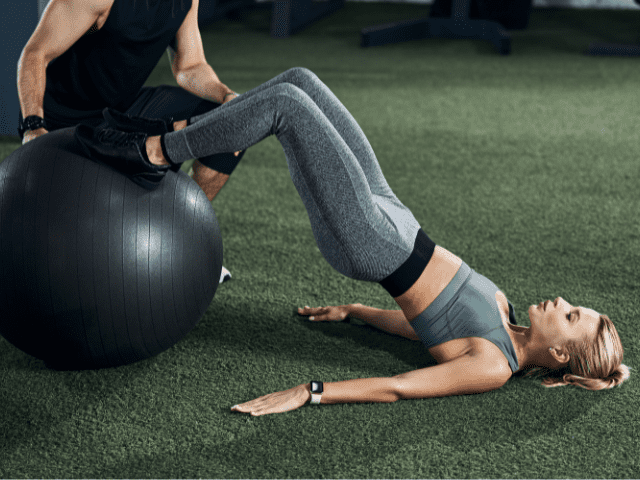Glute-Ham Raise (How To, Muscles Worked, Benefits)
Glute-Ham Raises are a lower-body exercise that is used primarily as an accessory movement to help lifters gain strength and hypertrophy for their hamstrings and glute muscles.
In this article, I am going to explain how to properly perform the glute-ham raise including some coaching points, muscles worked, and give some alternatives.
How To Do The Glute-Ham Raise
Equipment Needed
- Glute-Ham Raise Machine
Step-by-Step Instruction
- First, you are going to want to get the glute-ham raise machine adjusted to the correct length.
- I recommend adjusting the machine so that your hip crease is at the end of the padding of the machine.
- Locking your feet in, facing the ground, keep a neutral spine by focusing your eyes on the floor below.
- Take in a deep breath, brace the abdomen, and keep your hands on the handles until you are ready to perform the eccentric movement.
- Once ready, take your hands off the handles, extend your body, keep your arms at your side, and control your body down until your torso is about perpendicular to the floor.
- Pause for 1 second in the bottom of the position to maintain stiffness in the muscles before coming back up.
- After 1 second of the isometric hold, pull yourself back parallel to the floor, engaging the glutes, hamstrings, and low back, while also keeping stiffness in the abdomen and upper back.
- At this point, you have completed a hyperextension.
- From this position, you are going to keep the toes flexed up toward the shin, pull with the hamstrings, and extend the glutes until your torso is perpendicular to the ceiling.
- Slowly lower your body back down to the parallel to the floor position to prepare for the next repetition.
Coaching Points
One of the common mistakes I’ve seen with this movement is athletes will pull with the hamstrings and not engage the glutes.
What this looks like is the athlete leaves their hips behind and they don’t quite get to perpendicular because they didn’t extend the hips and engage the glutes.
Glute-Ham raises are surprisingly easy to mess up. One of the easiest ways to make a mistake is going down too fast and “whipping” yourself back to the starting position. As with any exercise, the setup, initial breath before eccentric movement, maintaining control, pausing, and breathing out during concentric contraction are important.
Glute-Ham raises are a great movement to use for accessory work after the main work is done for the session and rehabilitation purposes.
It is important for the lifter to maintain a neutral spine, maintaining tension in the abdomen and upper back. Remember to breathe in and hold the breath during eccentric (lowering your body) and breathe out as you perform the concentric movement (bringing your body back up).
How Many Reps?
Glute Ham Raises are a supplemental strength exercise for the posterior chain. Recommended rep ranges are 3 to 4 sets of 6 to 10 reps.
Muscles Worked
- Hamstrings
- Glute Muscles
Glute-Ham Raise Alternatives
Need an alternative for Glute-Ham Raises? Here are a few exercises that you may be able to use as a replacement.
Want more options? Here are 11 of my favorite alternatives for Glute Ham Raises.
Banded Good Mornings
A Banded Good Morning is an exercise where the lifter puts a band around their neck, resting on the traps (remember don’t crane the neck upward), and performs the hip hinge pattern which would be identical to the dumbbell RDL.
This is beneficial for novice lifters looking for a different form of resistance and also serves as a great warm-up movement for the more experienced lifter getting ready for squats and deadlifts.
Hyperextensions

A Hyperextension is an exercise where the lifter locks themselves into a glute-ham raise machine, facing the floor. The athlete should ensure the crease of their hip is at the edge of the pad as they fully extend their body (always remember to have your feet locked in so you don’t faceplant).
The athlete will control themselves down, keeping good tension in the abdomen, until their torso is about perpendicular to the floor.
At this point the athlete will perform the concentric movement, using their hamstrings, low back, and glutes to lock in the repetition at the top of the movement.
Stability Ball Leg Curls

Stability Ball Leg Curl is where the athlete lies on their back. Both legs start fairly straight with the heels on the ball. The athlete will bridge the hips up and curl the ball underneath them and then extend back out.
More Links and Info
Looking for more great Lower Body Lifts? Head over to the exercise library where there is a great collection of exercises with step-by-step instructions. All for free.

